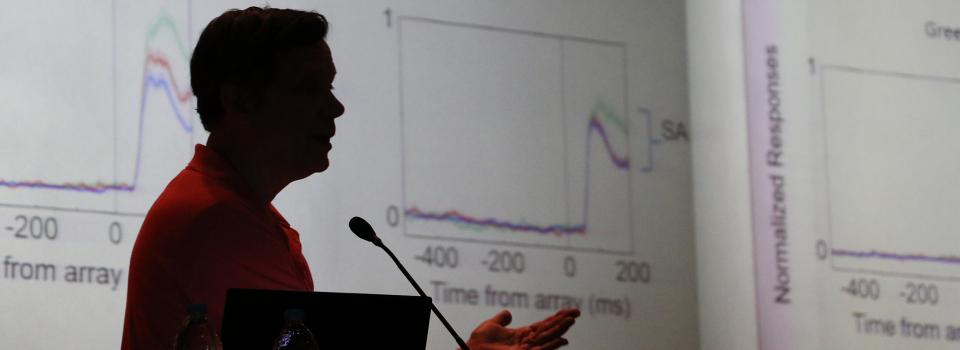
Topic:
How the Brain Pays Attention?
Speaker:
Robert Desimone
McGovern Institute, MIT
Introduce:
Our visual system is typically bombarded with information, only a small portion of which is typically relevant for behavior at a given moment. Attentional systems regulate which sources of information reach conscious awareness. Beyond regulating access to consciousness, attentional systems also play an important role in how the visual systems “decodes” from neural signals the identity of objects in a cluttered scene. Neural recording studies in animals and people are identifying where distracting information is filtered out along the visual pathways, as well as the sources of the attentional control. For spatially-directed attention, one key source of top-down attention is the frontal eye fields (FEF), feedback from which cause causes enhanced responses to stimuli at attended locations, and leads to synchronized neural activity with visual processing areas. Recent evidence suggests that the thalamus may also serve as an important relay of attentional feedback to visual cortex, resulting in the desynchronization of low frequency noise. Many aspects of the neural response changes with attention are explained by top-down inputs to a simple cortical circuit containing excitatory and inhibitory neurons. Feature, or object-based attention is not only necessary for finding objects in cluttered scenes, but it is closely related to memory recall and visual imagery. To help identify sources of direct object-related feedback to visual cortex, we have tested humans in a task that requires attention to one of two spatially overlapping objects (faces and houses), precluding the use of spatial attention. Neural activity was recording using magnetoencephalography (MEG) and fMRI. In this task, we found that attention to faces of houses causes enhanced activity and synchrony with the fusiform face area or the parahippocampal place area, respectively, and these areas synchronize their activity with the inferior frontal gyrus, an area in prefrontal cortex with known object selectivity. Thus, attention to locations and objects involve distinct but closely related feedback mechanisms in the prefrontal cortex. Recording studies in what could be the homologous area in animals show properties consistent with this role in object-based attention, and deactivation studies of this area show that it plays a critical role in relaying information about behaviorally relevant objects.
Time:
14:00-, 8 July 2014
Venue:
Science Auditorium, ECNU Zhongbei Campus, 3663 North Zhongshan Road
中山北路3663号 华东师范大学中北校区 科学会堂
For more infomation, please see the poster here: Click>>


